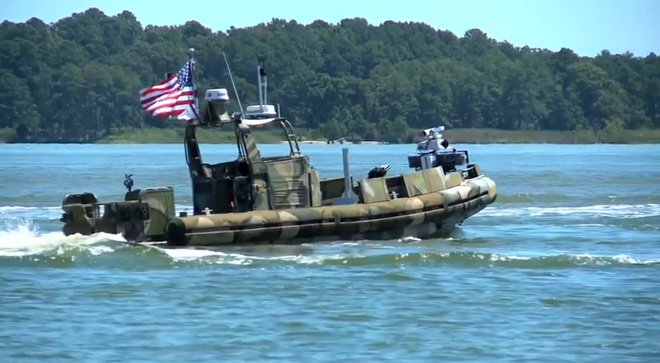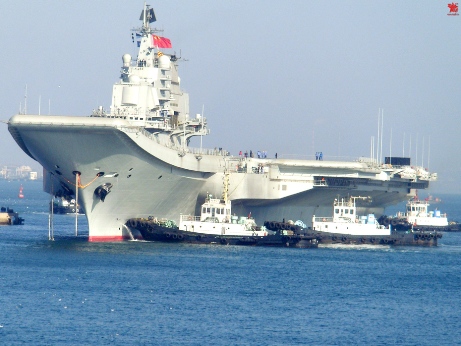
The autonomous Swarm demonstration, sponsored by the Office of Naval Research (ONR), highlights a first-of-its-kind technology that gives Naval warfighters a decisive edge through enabling unmanned Navy vessels to overwhelm an adversary.
WASHINGTON (PTI): In a breakthrough, the US Navy on Sunday said it has successfully developed cheap unmanned armed robotic boats that would not only its protect warships, but also, for the first time, autonomously "swarm" offensively on hostile vessels, giving naval war-fighters a decisive edge.
The first-of-its-kind technology, adapted from NASA's Mars rover programme, was successfully demonstrated over two weeks in August on the James River in Virginia allows unmanned Navy vessels to overwhelm an adversary.
Its sensors and software enable swarming capability, giving naval war-fighters a decisive edge, officials at the Office of Naval Research (ONR) said.
"This networking unmanned platforms demonstration was a cost-effective way to integrate many small, cheap, and autonomous capabilities that can significantly improve our war-fighting advantage," said Adm. Jonathan Greenert, chief of naval operations.
The technology called CARACaS (Control Architecture for Robotic Agent Command and Sensing) is under development by ONR, and can be put into a transportable kit and installed on almost any boat.
It allows boats to operate autonomously, without a Sailor physically needing to be at the controls including operating in sync with other unmanned vessels; choosing their own routes; swarming to interdict enemy vessels; and escorting/protecting naval assets.
"Our Sailors and Marines can't fight tomorrow's battles using yesterdays technology," said Chief of Naval Research Rear Admiral Matthew Klunder.
"This kind of breakthrough is the result of the Navy's long-term support for innovative research in science and technology," he said.
In the demonstrations, as many as 13 Navy boats operated using either autonomous or remote control. First they escorted a high-value Navy ship, and then, when a simulated enemy vessel was detected, the boats sped into action, swarming around the threat, ONR said in a statement.
In the future, the capability could scale to include even greater numbers of USVs and even to other platforms, including unmanned aerial vehicles (UAVs).
"This multiplies combat power by allowing CARACaS-enabled boats to do some of the dangerous work," said Dr Robert Brizzolara, programme manager at ONR.
"It will remove our Sailors and Marines from many dangerous situations for instance when they need to approach hostile or suspicious vessels. If an adversary were to fire on the USVs, no humans would be at risk," Brizzolara said.
Brizzolara said the CARACaS system evolved from hardware and software originally used in NASA's Mars rover programme.
Each robot boat transmits its radar views to the others so the group shares the same situational awareness. They're also continually computing their own paths to navigate around obstacles and act in a cooperatively manner.
The new technology will allow the USVs to detect, deter or destroy attacking adversaries. Any weapons fire from the USVs would need to be initiated by a Sailor supervising the mission.
The swarm demo announcement comes ahead of the anniversary of the terror attack on USS Cole off the coast of Yemen in October, 2000. In that attack, a small boat laden with explosives was able to get near USS Cole, a guided- missile destroyer and detonate, killing 17 US sailors and injuring 39 others.
Autonomous swarmboat capabilities could play a vital role in protecting people, ports and commerce, the statement said.
"While the attack on Cole was not the only motivation for developing autonomous swarm capability, it certainly is front and center in our minds, and hearts," said Klunder.
"If Cole had been supported by autonomous USVs, they could have stopped that attack long before it got close to our brave men and women on board," Klunder added.
 Previous Article
Previous Article Next Article
Next Article













The Indian Air Force, in its flight trials evaluation report submitted before the Defence Ministry l..
view articleAn insight into the Medium Multi-Role Combat Aircraft competition...
view articleSky enthusiasts can now spot the International Space Station (ISS) commanded by Indian-American astr..
view article